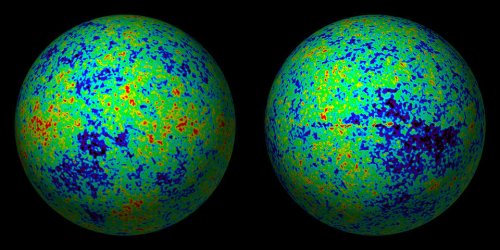Interesting, but I am unconvinced.
Skordis and Czech Academy colleague Tom Złósnik have now created a MOND-inspired model that accounts for the CMB while also being consistent with gravitational lensing observations and gravitational-wave speed measurements. The model follows recent MOND efforts in postulating the existence of two fields that permeate all of space and together act like an extra gravitational force. One of these fields is a scalar field—similar to the Higgs field that is associated with the Higgs boson. The other is a vector field, which has a direction at each point in space, somewhat like a magnetic field.
Skordis and Złósnik set the model’s parameters so that, in the early Universe, the gravity-modifying fields generate a gravitational effect that mimics that of dark matter. Mimicking dark matter in this way ensures that the observed CMB patterns are reproduced. The fields evolve over cosmic time, and eventually the gravitational force follows the original MOND proposal.
That would seem to be a much more complex scenario than positing some hitherto unknown particle. Why is is philosophically (and/or psychologically) preferable to modify some other area of physics ? Why must particle physics be singled out for special protection ? And where do these fields come from anyway ? The dark matter paradigm is fantastically successful in that observations on the scale of individual galaxies have been backed up with astonishing consistency of scales millions of times greater. I would like to know more about what dictates the evolution of these alternative fields : in the dark matter paradigm, it is governed only by mass.
McGaugh counters that dark matter models cannot explain everything, such as the Universe’s lithium abundance or the discrepancies between different types of measurements of the cosmic expansion rate. The new MOND model might be able to solve these problems, but Skordis says that it will take more time to work out the theoretical details. He says that the model can be checked in other ways, for example, by comparing its predictions with observations of galaxy clusters or by looking for signatures of the gravity-modifying fields in gravitational waves.
To my mind, most, or very credibly all of the supposed problems with dark matter relate to the physics of the baryons, and have little or nothing to do with gravity at all (cosmic expansion notwithstanding). A previous relativistic incarnation of MOND was ruled out because it couldn't explain pulsar timing, so I'm curious to see how this one turns out. But I wouldn't hold my breath :
Skordis admits that—unlike dark matter models that are often based on fundamental symmetry principles—the new model was not conceived with an underlying theory in mind. However, such a theoretical basis might be uncovered using the new MOND model.
If you don't have a physical basis for it, you can generally make stuff up quite freely. I'm not really sold that this is anything to get too excited about, but we'll see.
